A Vivid Encounter: The Northern Carmine Bee-eater and Its Striking Plumage
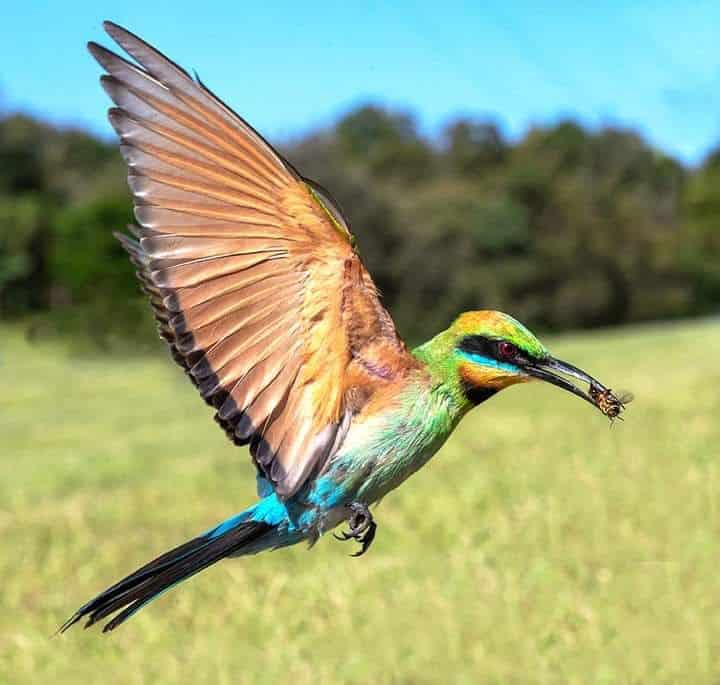
Meet the carmine bee-eater – a strikingly beautiful bird characterized by its stunning and richly colored plumage. With its captivating appearance and remarkable aerial abilities, the Northern carmine bee-eater (Merops nubicus) is truly a sight to behold.

Belonging to the Meropidae family of bee-eaters, the Northern carmine bee-eater stands out with its predominantly carmine-colored feathers. Its green-blue head and throat, adorned with a distinctive black mask, add to its allure. The slender body, complemented by a pointed black beak and mesmerizing red eyes, further enhances its visual appeal. Equipped with sharp claws, this avian wonder adeptly perches on vertical surfaces, displaying its graceful presence.
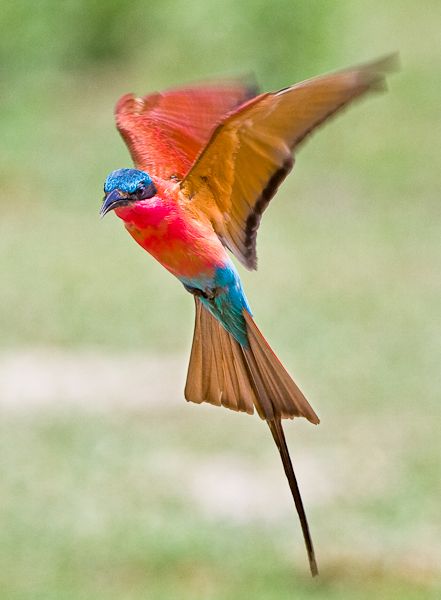
What makes the Northern carmine bee-eater even more fascinating is its similarity in appearance between males and females. While minor variations may exist in the color of their eyes, both sexes exhibit the same remarkable beauty. In some cases, males may possess slightly longer tail-streamers, adding a subtle distinction to their overall appearance.
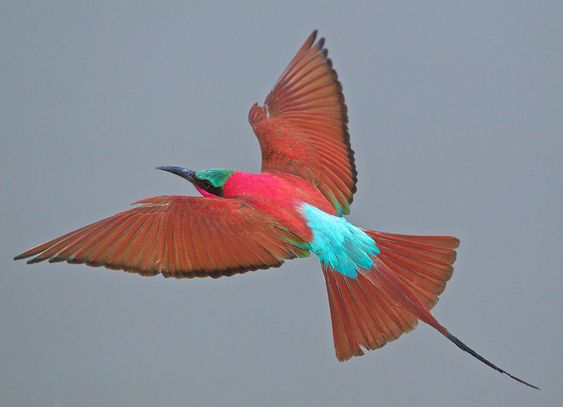
Indigenous to central and northern regions of Africa, including countries like the Central African Republic, Benin, and Cameroon, the Northern carmine bee-eater thrives in diverse habitats such as savannas, grasslands, and woodlands. Its adaptability to different environments allows it to find suitable nesting and foraging grounds throughout its range.
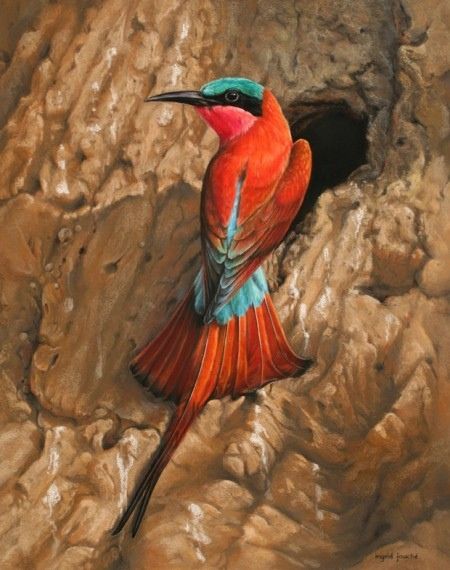
Unsurprisingly, bees constitute a significant portion of the Northern carmine bee-eater’s diet. These skilled hunters also target other airborne insects like ants, grasshoppers, and locusts. Their hunting technique involves perching on branches, keenly scanning the surroundings for passing insects, and swiftly capturing them in mid-air. This agile display of aerial acrobatics demonstrates their exceptional hunting prowess.

When it comes to nesting, the Northern carmine bee-eater is a master architect. They form extensive colonies and often establish their nests on cliffs or near river banks. These sociable birds dig horizontal nesting tunnels, which can reach impressive lengths of up to eight feet or more. Within these tunnels, females lay up to five eggs per clutch. Both parents contribute to incubation and the rearing of the chicks, ensuring their survival and development. In about three to four weeks, the chicks are nearly fully fledged, and they continue to receive parental care and feeding until they become proficient hunters themselves.
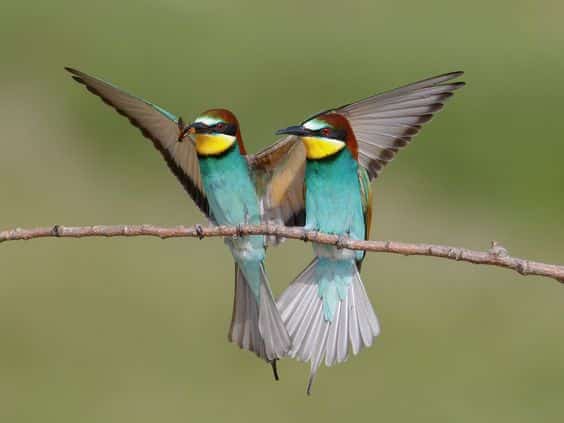
Currently, the Northern carmine bee-eater is not classified as being at immediate risk of population decline due to its extensive range. However, like many other avian species, it faces various challenges, including habitat degradation, climate change, and potential disturbances to nesting sites. Conserving their natural habitats and raising awareness about their ecological importance are vital steps in ensuring the long-term survival of these magnificent birds.
Encountering the Northern carmine bee-eater in the wild is a truly awe-inspiring experience. Its vibrant plumage, coupled with its agile flight and nesting behaviors, make it a true gem of the avian world. Let us appreciate and protect the natural habitats that these striking birds call home, ensuring that future generations can continue to marvel at the beauty and grace of the Northern carmine bee-eater.



